What is new at Figs 4 Fun |
BLOG
|
It is my hope to be able to make periodic contributions here which reflect my ongoing experiences and experiments with figs.
|
May 2020
|
Update on my "stumping" experiment, after about 3-1/2 months. In the end, the top three buds sprouted and 3 or 4 shoots emerged from each bud. I have thinned these out and have about 6 shoots left. Looks like it will provide a great opportunity to graft next season and produce a multi-variety tree. The original tree was about 10 feet tall, and I suspect that these shoots will be that tall by the end of the season.
|

|
I have several dozen 2 gallon plants that have lost their tags, were seedlings, or other experimental plants. So, the next project for this seaason was using these as rootstocks for grafting some trees. I decided to use a modified cleft graft, where I actually cut a "V-shaped" portion out of the top of the rootstock, and slpit or cleft more below the "V" portion. I chose this to better match the shape of the rootstock and scion. It is a more difficult cut to make, but the fig wood is relatively soft. To beginning grafters, the knives are very sharp. If they will cut wood, they will definitely cut you. You always want to hold the knife and work in a direction that keeps your fingers out of the way when the knife slips - and it will sooner or later. I chose to do this somewhat late in the spring because i wanted my rootstocks to be fully leafed out and actively growing. This activity helps heal the graft quickly.
|
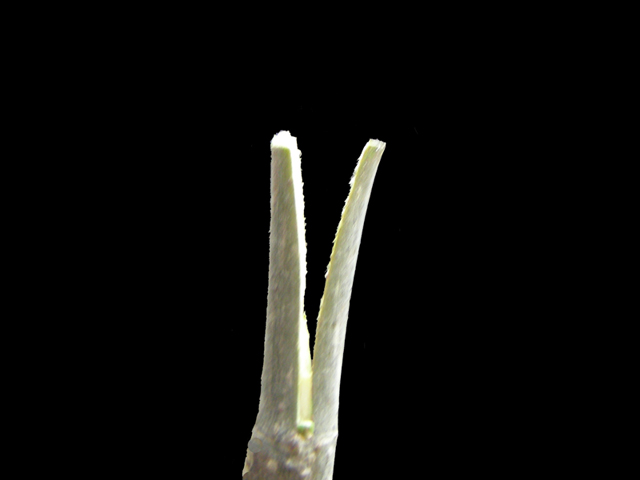
|
I prepared the scion portion of the gaft, wrapped it with 1/2" parafilm beginning at the top and winding it all the way down to where the cut started.
|
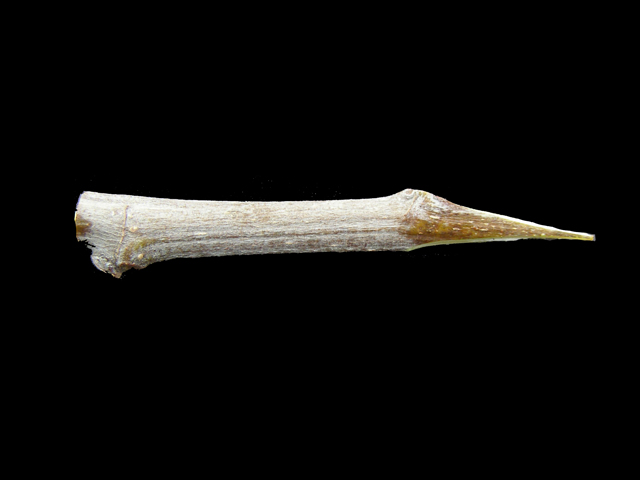
|
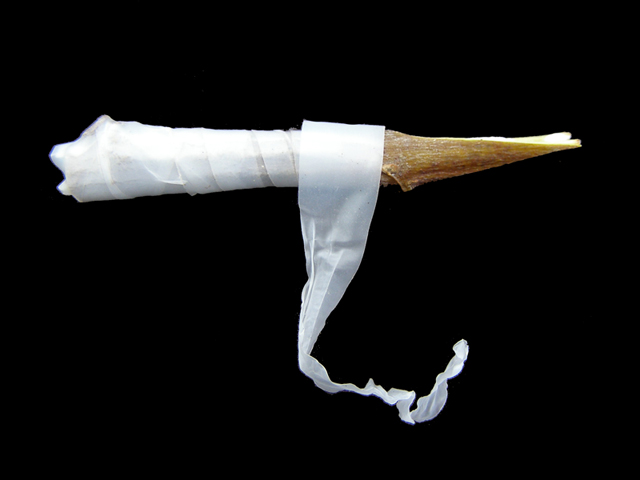
|
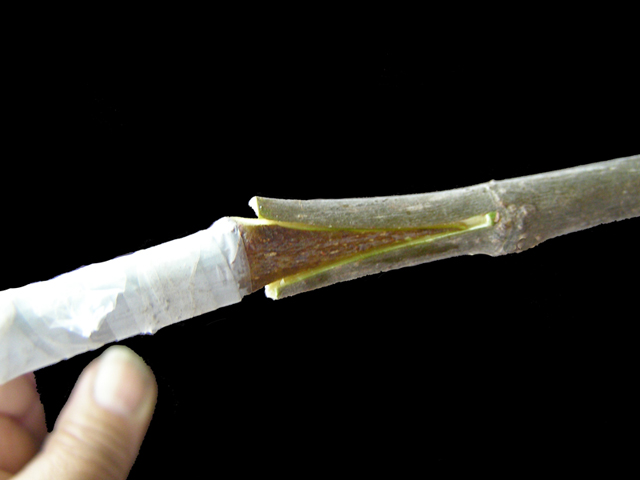
|
After inserting the scion, I wrapped the graft with 1/2" green nursery tape beginning below the graft, up and over the top of the graft, and back down below the graft and then tied it off. I wrap snugly on the way up, to get the two pices held in the proper position and then try and torque down as much aas possible on the way down to force the two pieces firmly together. I added a label, and then covered the graft and scion with white paper to keep heat from sunlight from degrading or cooking the scion and placed them in mostly shade.
|
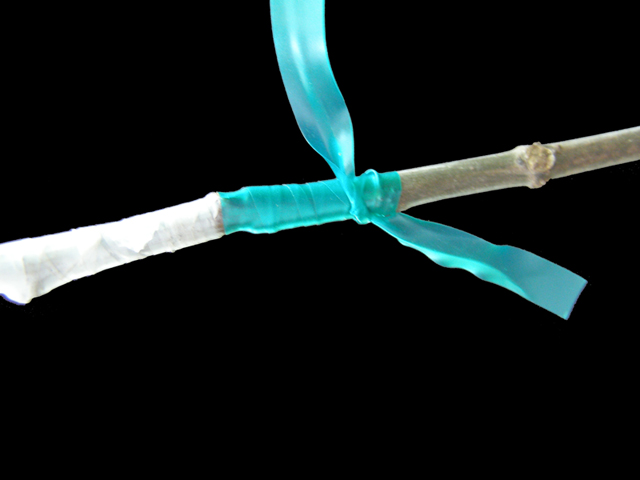
|
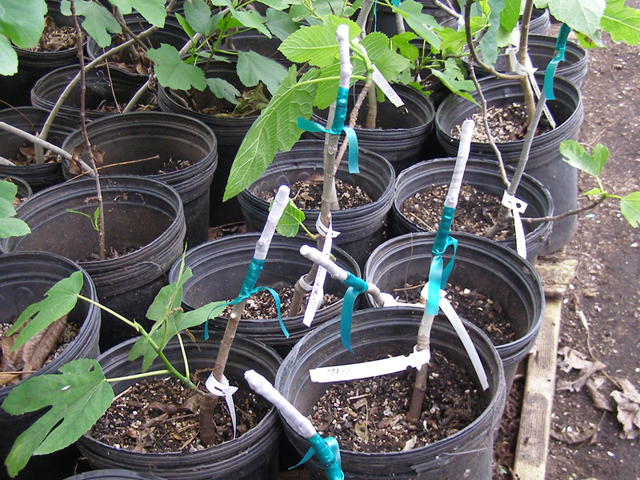
|
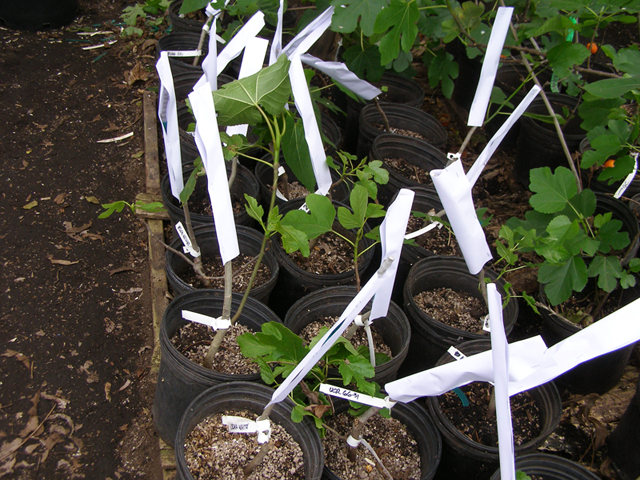
|
April 2020
|
Update on my "stumping" experiment, after about 2-1/2 months. I was surprised that the uppermost bud was the slowest of the three buds that have broken dormancy. I had expected the uppermost bud would have had dominance.
|
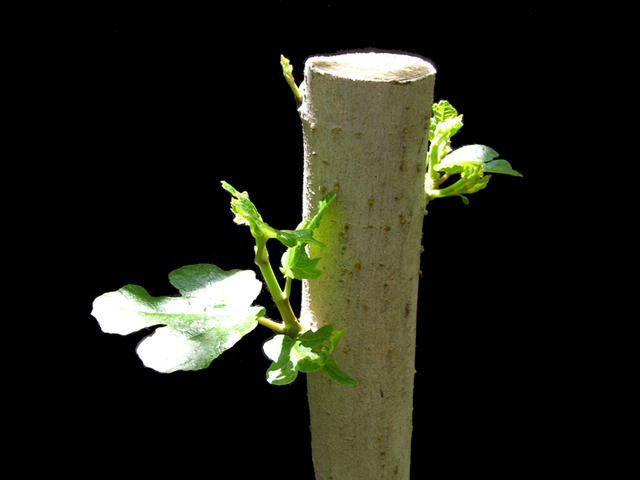
|
Another experiment is an "espalier" experiment. I had a potted plant whose roots escaped into the ground. It grew quite fast and was not able to remain erect. Instead it did a kind of "natural-" or "self-" espallier. It grew several vertical branches along the horizonal trunk. Here is what it looked like after I pruned it.
|
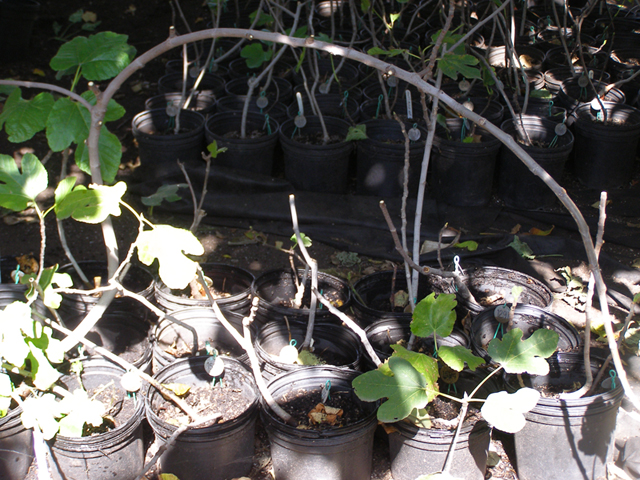
|

|
Here is what it looks like about 8 weeks later.
|
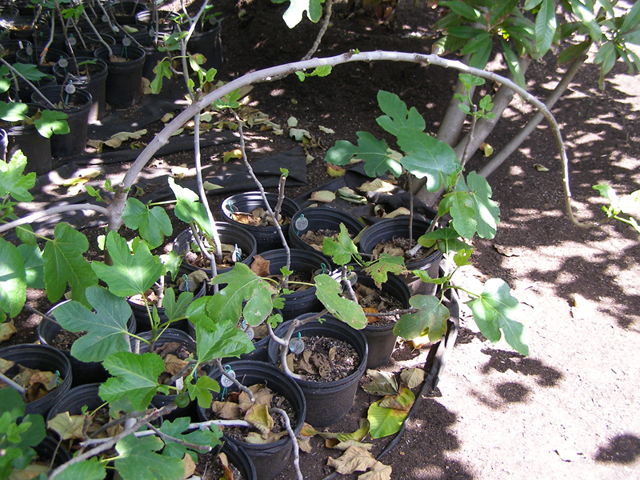
|

|

|
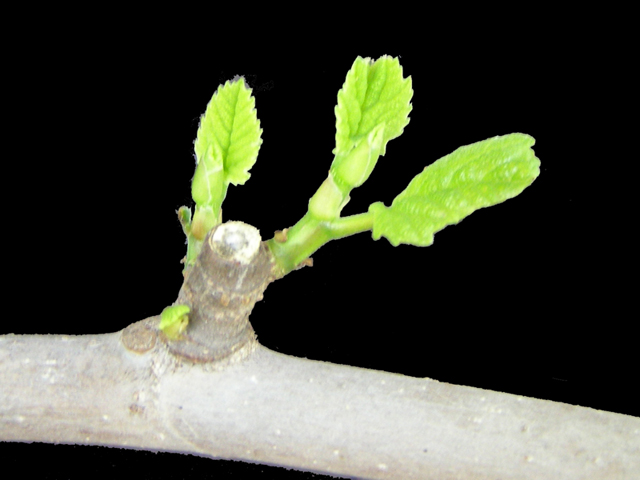
|
And for history buffs, here is a fig tree in Parlier, CA from an old postcard. The postcard was mailed in 1924, so this picture is roughly 100 years old. The variety was not identified.
|

|
March 2020
|
Figs don't understand or care about coronaviruses. They are not hoarding toilet paper. However, they are off to a great and early start this season as a result of early rains and a warm February. Here is what they looked like last month.
|
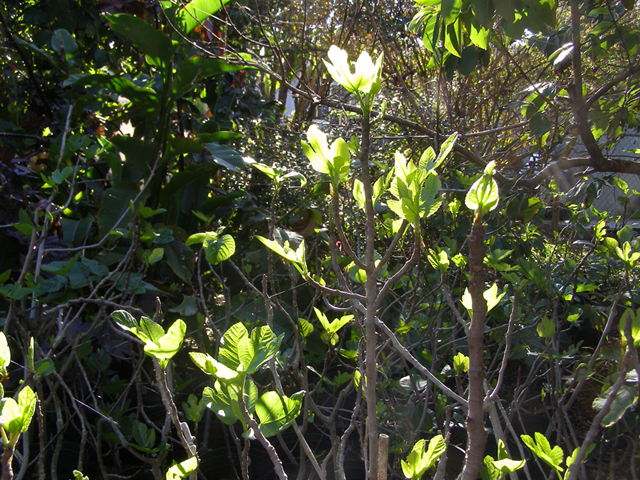
|
Some of the trees already have brebas that are the size of quarters.
|
Updating my tree stumping experiment: the first two buds near the top have broken dormancy.
|
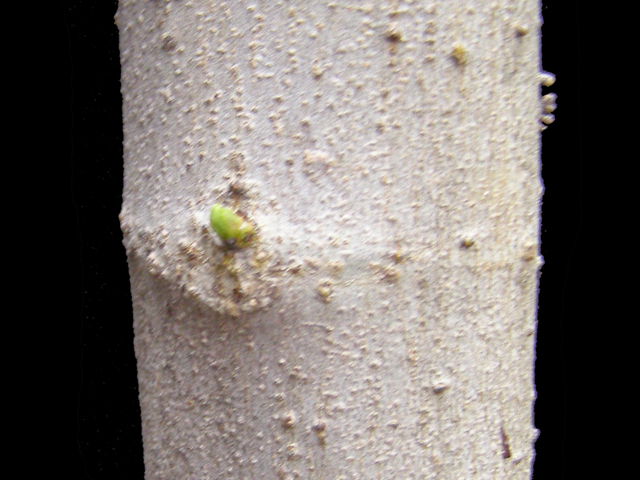
|
Many years ago I saw an article about planting orchards in France. They took cuttings 3-4' long and, if a remember correctly, about 2-3" in diameter and buried them 2-3' in the ground where they wanted the new trees in the orchard to be. They were left to root and grow in place. I didn't have anything that large, and didn't want to plant directly in the ground, so "planted" some 1 to 1-1/2" cuttings in tall pots to simulate the procedure. I wrapped the tops of the cuttings with cling wrap to reduce moisture loss and placed them in the shade. We will see what "develops". My guess is that they are planted in well draining soil in France, whereas I have very heavy clay and cobbles.
|
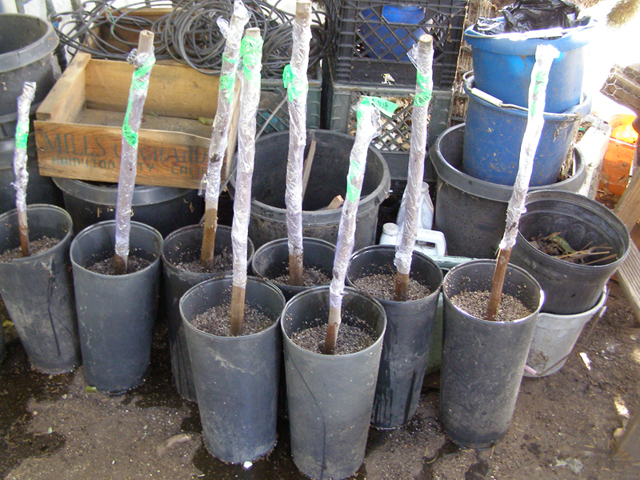
|
We have uploaded about 200 new pictures at figs4fun.com, mostly varieties with first time pictures. Here is one example, for people who purchased a Dave Wilson Green Ischia tree from me 2-3 years ago. It was worth the wait.
|
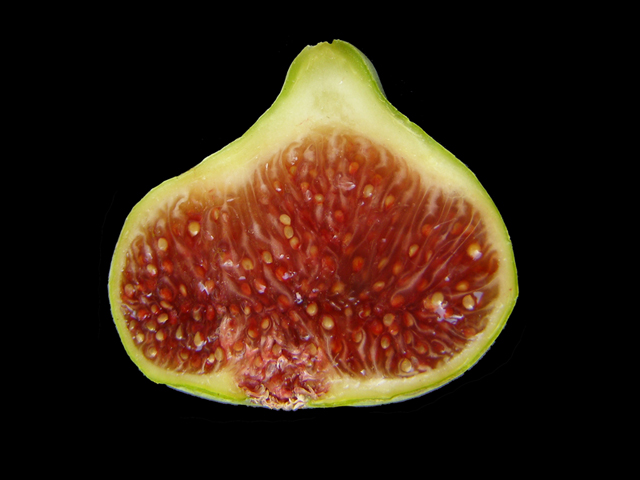
|
How long is fig season? Ignoring breba figs, the main crop season usually lasts in San Diego from late July to early October, with the bulk of figs ripening from the middle of August to later September. In contrast, observing the figs at the USDA Wolfskill Experimental Orchard over several years indicates that 95% of the varieties have ripe figs about August 15th. Some are ripening their last figs. some are ripening their first figs, and the rest are about in the middle. It appears that greater heat during ripening time compresses the season, and cooler climates expand or lengthen the season, even to the point that figs do not begin ripening until the weather is too cool. One grower in California's central valley picks his three varieties over a 4 week period, and his season is finished
|
February 2020
|
So far this year over 600 pictures have been added to the "Varieties Pages" with about 200 varieties receiving their first pictures. I am going to continue to focus on those varieties which still do not have pictures, but which may have unprocessed pictures taken in prior years.
For many years I have read old reports of fig growers in the east burying their cuttings in the ground for the winter. Most reports always added "upside down". I never gave it too much thought, except to wonder why "upside down" seemed important. I understood that burying them below the freeze line basically "refrigerated" them for the winter and kept them undamaged in the same way that burying the whole tree worked. In years past I had a large number of cuttings from a particular tree which were stored in the shade in my front yard like this.
|
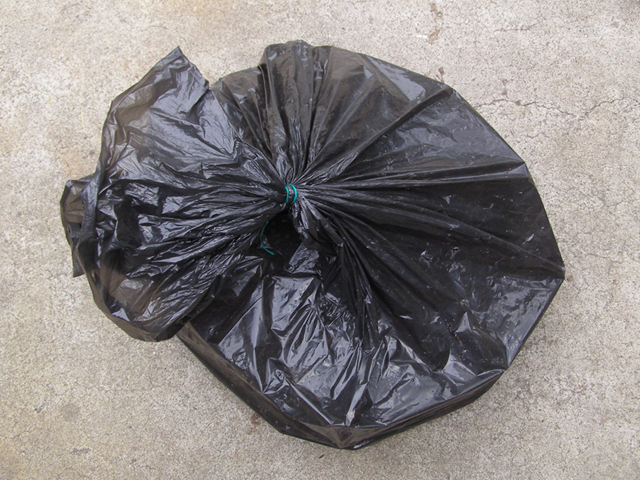
|
Opening the bag after a couple months months yielded these results, and if left longer the results were even more dramatic. The cuttings were random, but the more a cutting was oriented upside down, the greater the percentage of cuttings which had rooted.
|
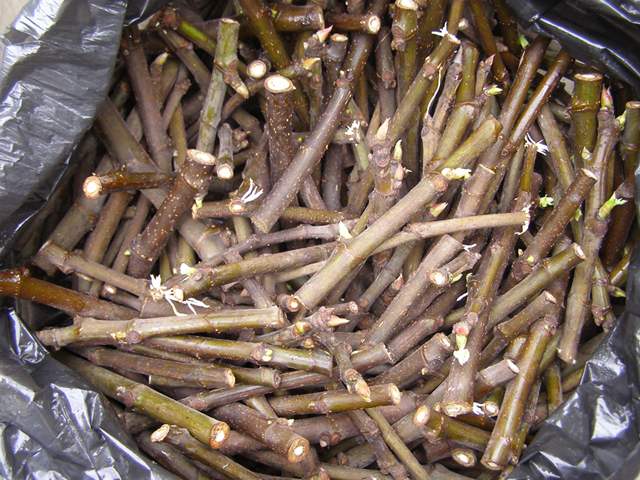
|
So, in January 2019 I took some of the same cuttings, which were 3/4" and larger in diameter and about 16" long and placed them in a bag, covered by a 15 gallon black nursery pot and put them in the shade of a tree for the rest of the winter.
|
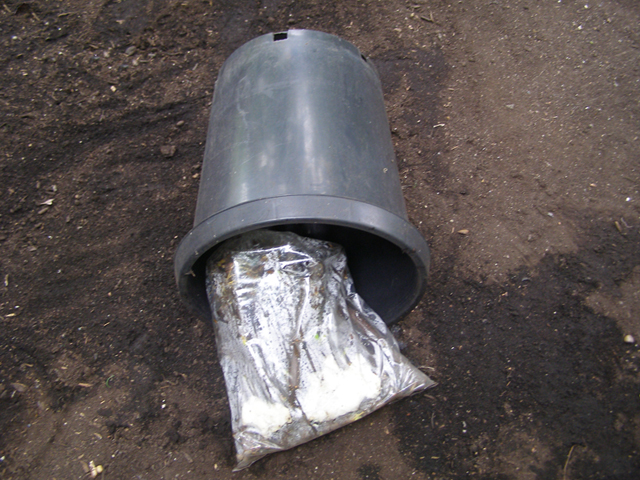
|
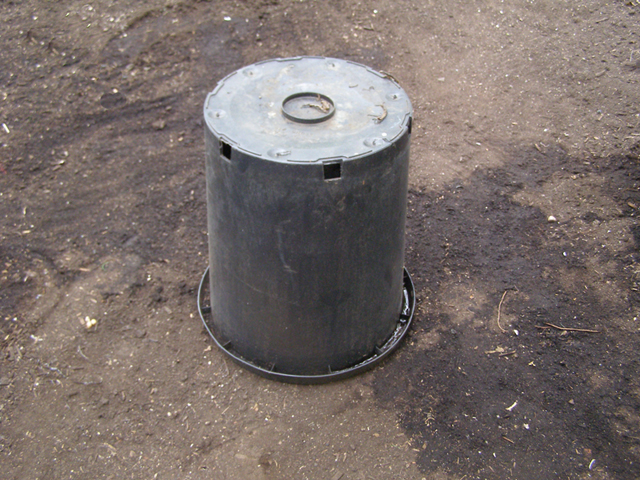
|
Which eventually turned into these, where the upside down cuttings rooted, and the rightside up ones did not.
|
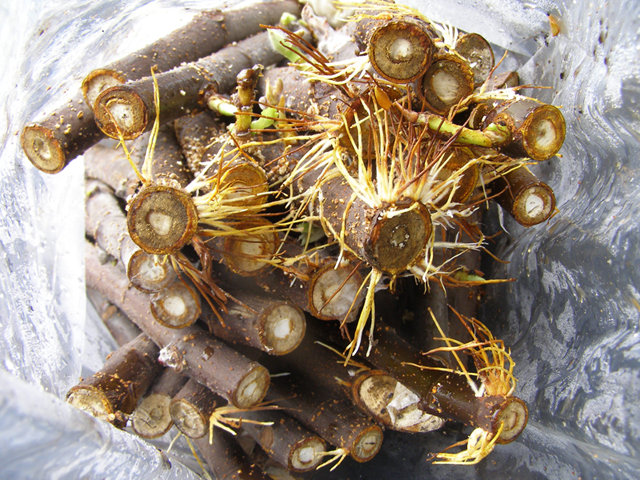
|
Which turned into these. Of the 18 upside down cuttings potted up, some did have poor root development, but 11 have survived and grown well.
|

|
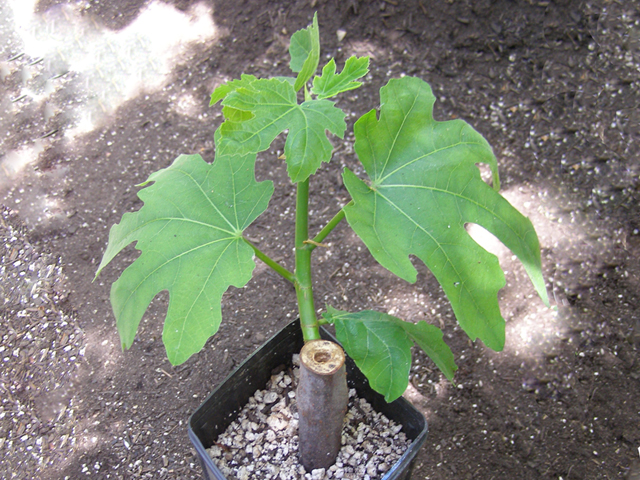
|
I hope to do some further experiments this season, but I have not started yet.
|
And for Californians, Calimyrna was one incredible taste treat in 2019.
|
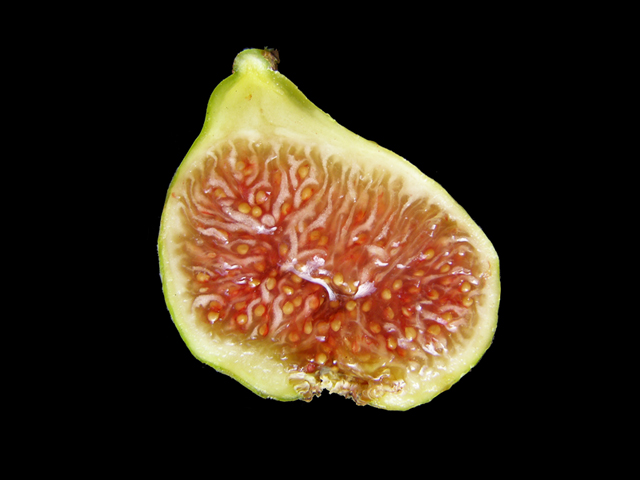
|
January 2020
|
As a starting place, I have finally completed uploading pictures of the new fig orchard planted at USDA/UC Davis taken August 2018. The trees, as a group, can be seen HERE and all of the tree and fruit pictures have been integrated into the VARIETIES PAGES.
I have begun processing and uploading the pictures taken at Encanto Farms Nursery in 2019, including many varieties which fruited for the first time. I have about 3 dozen completed.
Lastly, for now, is a picture of my Uttaree Raajah fruit, one of my latest seedling trees. This is a later season fig with a fruity flavor and a light caramel finish. I was also excited about the white color of the outer flesh which contrasts with the red center. White seems to be an uncommon color in a fig.
|
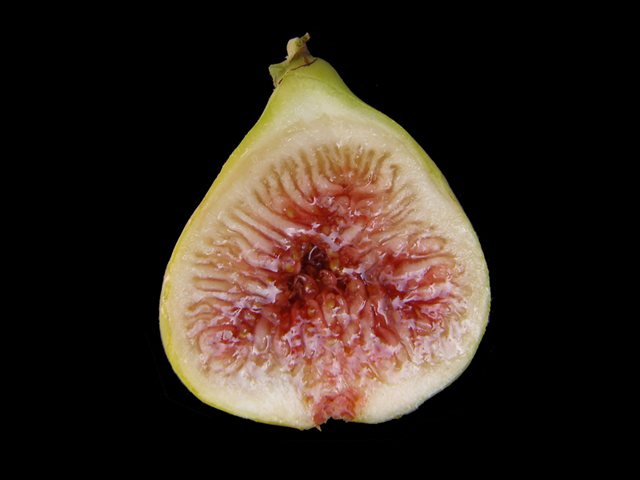
|
An excuse for an experiment.
I have always wondered what would happen if you just sawed a tree off and let it regrow, and a way of shortening an overgrown tree. I had a seedling caprifig that I was going to remove (it was a caprifig taking up space, afterall). So I repurposed it as an experiment.
It was more than 10 feet tall, and I cut is back to about 4 feet.
|

|
|
The trunk is 2" in diameter.
|
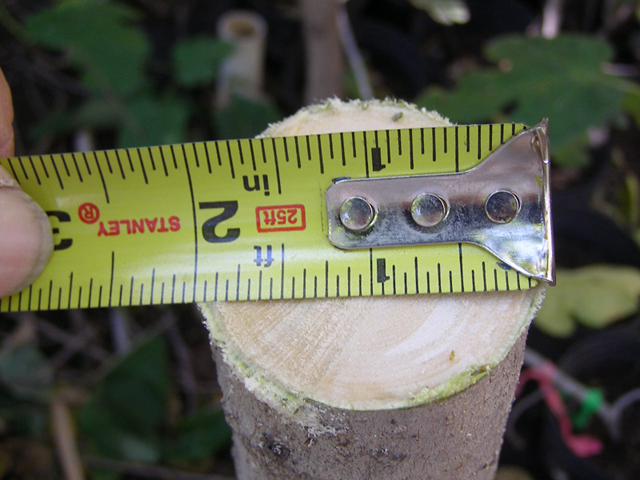
|
|
The final result.
|
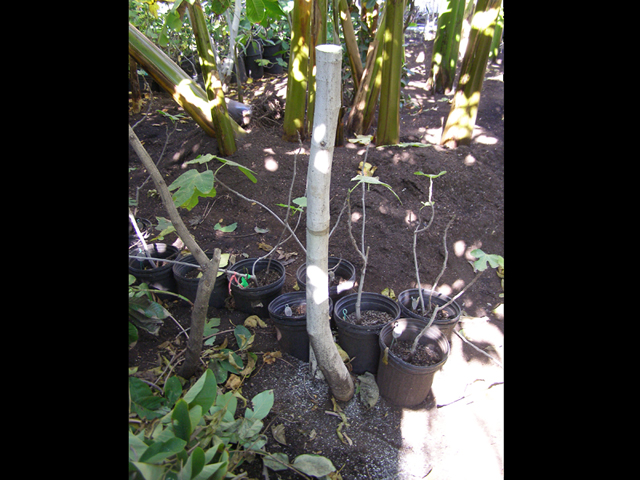
|
This spring we will see what happens.
|
Jon
|































